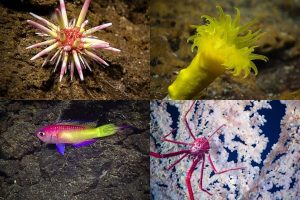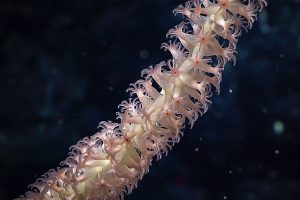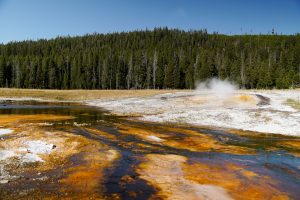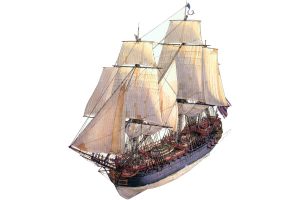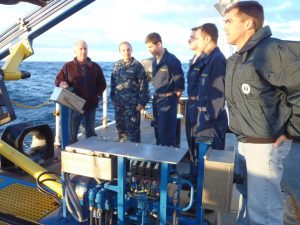The Bonhomme Richard search naturally lends itself to teaching about oceanographic careers and Science, Technology, Engineering and Math (STEM) topics including ocean technologies, marine engineering, critical thinking and problem solving, survey strategies, archaeology, and other disciplines in an interesting and engaging manner. Underwater survey and marine archaeology have strong science components, which are critical in conducting every phase of the survey and archaeological processes. Advancements in navigation and underwater detection technologies have led to many shipwreck and deep ocean discoveries. Technologies such as Autonomous Underwater Vehicles, Remotely Operated Vehicles, sonars, magnetometers, and other tools are necessary to survey the ocean floor and locate shipwreck sites. The field of engineering allows for the extraction and excavation of these sites for further study, and the research vessels themselves are fine products of engineering. The science of conservation chemistry is employed to protect artifacts from corrosion and disintegration. In short, STEM disciplines enable us to discover, retrieve and save pieces of our history so that we may better understand our future.
Due to its interdisciplinary nature, the BHR project is a fascinating framework in which to teach STEM disciplines to students of all ages.
In 2010, the U.S. Naval Academy’s first and only online course, titled Historic Shipwrecks: Science, History, and Engineering, was created through a partnership with the Ocean Technology Foundation. The course also offered in-person lectures by BHR team members or other marine archaeology/history/technology experts. It has since been expanded into a more comprehensive course with a field component that uses side scan sonar and a magnetometer to conduct underwater surveys.
Five midshipmen from the Naval Academy have participated in BHR expeditions, where they gained hands-on experience with AUVs, ROVs, and sonar data collection and analysis. They were immersed in the missions and participated as science team members, assisting with all aspects of the operations and making significant contributions to the surveys.

